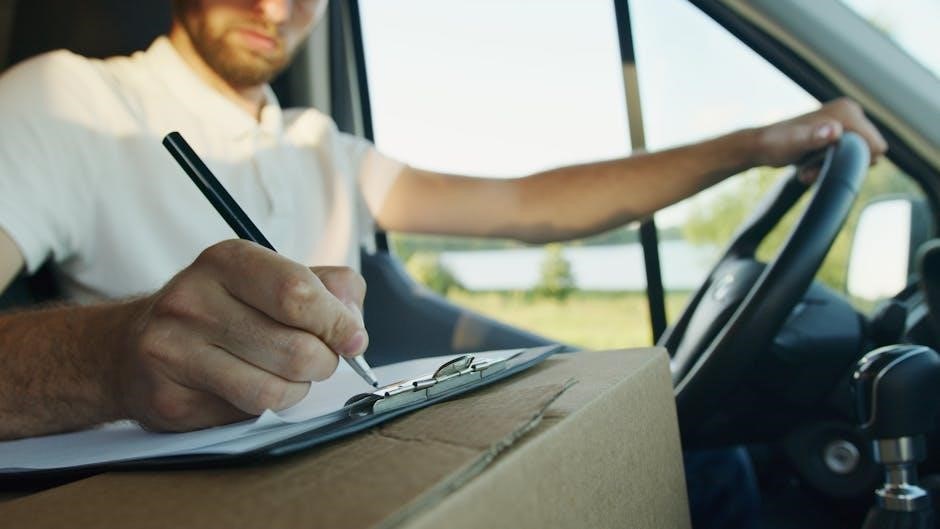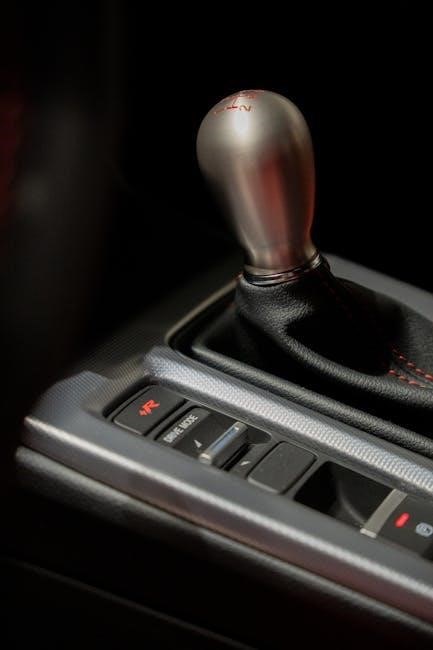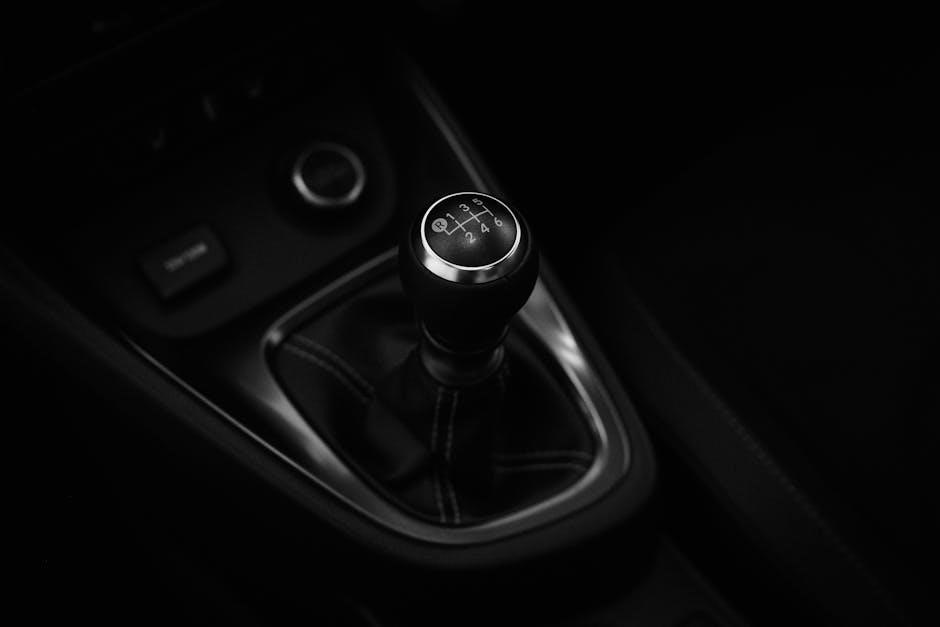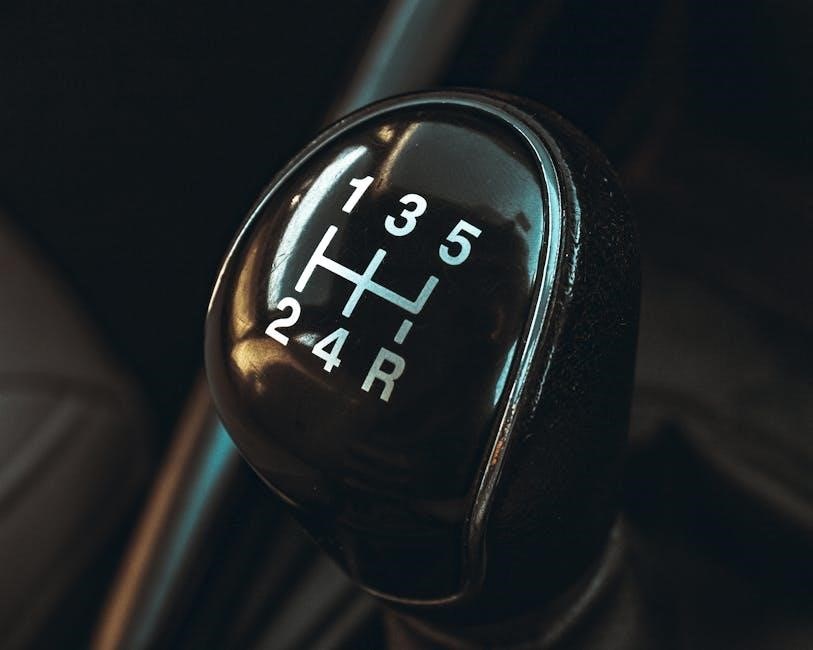The Minnesota Driver Manual in Spanish provides essential driving rules, safety tips, and license requirements for Hispanic residents. It ensures equal access to critical driving information.
1.1 Importance of the Spanish Version for Hispanic Residents
The Spanish version of the Minnesota Driver Manual is crucial for ensuring Hispanic residents can access essential driving information in their native language. It eliminates language barriers, enabling them to understand traffic laws, safety guidelines, and licensing requirements clearly. This resource empowers Spanish-speaking individuals to prepare effectively for driver’s tests and drive confidently on Minnesota roads. By providing equal access to critical information, the Spanish manual supports diversity and inclusivity in driver education across the state.
1.2 Overview of the Minnesota Department of Public Safety (DPS)
The Minnesota Department of Public Safety (DPS) is a state agency dedicated to ensuring public safety and reducing crime. It oversees various divisions, including the Driver and Vehicle Services (DVS), which manages driver licensing, vehicle registration, and traffic safety. The DPS works to enforce traffic laws, improve road safety, and provide resources like the Spanish driver manual to support all residents. Its mission is to protect and serve Minnesota communities through education, enforcement, and community engagement.
1.3 Purpose of the Driver Manual
The Minnesota Driver Manual is designed to educate drivers about traffic laws, road safety, and licensing requirements. It serves as a comprehensive guide for both new and experienced drivers, covering essential topics like road signs, safe driving practices, and the rules of the road. The manual also helps prepare individuals for written and road tests, ensuring they are well-informed and ready to drive responsibly.
By providing clear and concise information, the manual aims to promote safe driving habits and reduce accidents; It is a vital resource for anyone seeking to obtain or renew a driver’s license in Minnesota.

Eligibility Requirements for a Minnesota Driver’s License
Minnesota requires applicants to meet specific eligibility criteria, including age, residency, documentation, and vision standards. These ensure applicants are qualified and ready to drive safely.
2.1 Age Requirements
In Minnesota, the minimum age to apply for a Learner’s Permit is 15 years old. At 16, teens can obtain a Provisional License after completing the required hours of supervised driving. Full Driver’s License eligibility begins at 17 years old, provided all GDL requirements are met. For applicants 18 or older, an unrestricted Full Driver’s License is available without GDL participation. These age requirements ensure new drivers gain experience gradually, enhancing road safety.
2.2 Residency and Documentation
To apply for a Minnesota driver’s license, applicants must prove residency and identity. Required documents include a valid passport, birth certificate, or permanent resident card for non-citizens. Proof of residency, such as a utility bill or lease, is also necessary. For name changes, a marriage certificate or court document must be provided. All documents must be in English or accompanied by a certified translation. This ensures compliance with state and federal regulations, while also verifying the applicant’s eligibility to drive legally in Minnesota.
2.3 Vision Test Requirements
A vision test is mandatory for obtaining a Minnesota driver’s license. The test assesses visual acuity to ensure safe driving ability. Applicants must meet specific standards, with or without corrective lenses. Exemptions may apply for certain medical conditions, but documentation from a healthcare provider is required. During the test, applicants are asked to identify symbols or letters on an eye chart. The Minnesota Department of Public Safety (DPS) administers this test to ensure all drivers meet the necessary visual standards for road safety. Proper vision is critical for operating a vehicle responsibly.

The Graduated Driver Licensing (GDL) System in Minnesota
Minnesota’s GDL system is designed to help new drivers gain experience safely. It includes three phases: Learner’s Permit, Provisional License, and Full Driver’s License, each with specific restrictions.
3.1 Learner’s Permit
The Learner’s Permit is the first step in Minnesota’s GDL system, typically for new drivers under 18. Applicants must pass a written test and vision exam. The permit allows driving under adult supervision, with at least 50 hours of practice, including 15 hours at night. Drivers under 18 cannot drive between midnight and 5 a.m. unless accompanied by a licensed parent or guardian. This phase helps build foundational driving skills in a controlled environment before advancing to the next stage.
3.2 Provisional License
The Provisional License phase follows the Learner’s Permit, typically for drivers aged 16 to 17. It allows unsupervised driving, with some restrictions. Holders can drive alone but must follow curfew rules and cannot have more than one passenger under 20 unless supervised. This phase lasts at least one year, during which no moving violations can occur. Completion of this phase without incidents leads to eligibility for a Full Driver’s License, marking the next step toward unrestricted driving privileges in Minnesota.
3.3 Full Driver’s License
A Full Driver’s License is granted after completing the GDL program, typically at age 18 or older. It removes all restrictions, allowing unrestricted driving privileges. To qualify, drivers must have held a Provisional License for at least one year without violations. The Full License is valid for four years and can be renewed. It is the final step in Minnesota’s licensing process, providing full freedom to drive without supervision or passenger limits. This license is essential for independent driving and is recognized statewide.

Studying the Minnesota Driver Manual in Spanish
The Minnesota Driver Manual in Spanish is available online, offering key sections on traffic laws, signs, and safe driving practices. Study tips include focusing on highlighted rules and taking practice tests to ensure readiness for the written exam. This resource is essential for Spanish-speaking residents seeking to obtain a Minnesota driver’s license efficiently.
4;1 Where to Access the Spanish Version
The Spanish version of the Minnesota Driver Manual is available on the official Minnesota Department of Public Safety website. Visit drive.mn.gov to download or view the manual online. Additionally, the Minnesota DVS offers a multilingual virtual assistant to help Spanish-speaking residents navigate the manual and related resources. Ensure to use only official sources to avoid outdated or incorrect information. The manual is also accessible through the MyDVS account, which can be set up on the same website.
4.2 Key Sections to Focus On
Spanish-speaking drivers should focus on sections covering traffic laws, road signs, and safe driving practices. The manual also details the Graduated Driver Licensing (GDL) system, outlining requirements for learners, provisional, and full licenses. Understanding vision test standards and document requirements is also crucial. Additionally, the manual provides tips for effective study habits and highlights common mistakes to avoid during the written and road tests. These sections ensure a comprehensive understanding of Minnesota driving regulations.
4.3 Tips for Effective Study
For effective study, focus on consistent practice with online practice tests and the multilingual virtual assistant. Break study sessions into manageable parts, prioritizing road signs, traffic laws, and safety tips. Review mistakes regularly to improve understanding. Utilize community resources and workshops for additional support. Regular practice ensures mastery of Minnesota driving regulations and boosts confidence for the written and road tests. Stay organized and dedicated to achieve success in obtaining your driver’s license.

Vision Test Requirements
The vision test ensures drivers meet Minnesota’s visual acuity standards (20/40 in one eye). It is mandatory for original, renewal, or duplicate licenses, with exemptions for certain cases.
5.1 Visual Acuity Standards
In Minnesota, drivers must meet specific visual acuity standards to obtain a license. The requirement is 20/40 vision in at least one eye with or without corrective lenses. This ensures safe driving ability. If vision is below 20/40, applicants may need to undergo further evaluation. Exemptions exist for certain cases, but most drivers must meet this standard. The vision test typically involves reading an eye chart to assess clarity and sharpness. Proper vision is critical for road safety, so failing the test may result in license restrictions or denial.
5.2 Exemptions and Special Cases
Certain individuals may qualify for exemptions under Minnesota’s vision test requirements. For example, drivers with visual impairments may be eligible for restricted licenses. Special cases include applicants using bioptic lenses or those with monocular vision. These exemptions ensure fair access to licensing while maintaining road safety. Applicants must provide medical documentation from an eye care professional. The Minnesota DPS evaluates each case individually to determine the appropriate restrictions or accommodations. Exemptions are granted only if they do not pose a significant risk to public safety.
5.3 What to Expect During the Test
The vision test assesses your ability to safely operate a vehicle. You will be required to read an eye chart to measure visual acuity, identify colors, and demonstrate peripheral vision. The test is straightforward and quick, ensuring your vision meets Minnesota’s safety standards. Applicants with corrective lenses must wear them during the test. The results determine if you qualify for a license without restrictions or if limitations apply. Be prepared to follow the examiner’s instructions carefully to complete the test accurately.

Scheduling and Preparing for the Written Test
Schedule your appointment online via the MyDVS account or in person. Gather required documents, such as ID and residency proof. Utilize practice tests and the Spanish manual to prepare effectively for the exam.
6.1 How to Schedule an Appointment
To schedule a written test appointment, visit the Minnesota DVS website or use the MyDVS online portal; Select your preferred location and time. Ensure you have all required documents, such as identification and residency proof. You can also schedule in person at an official DVS exam station. Additionally, utilize the multilingual virtual assistant on drive.mn.gov for guidance in Spanish. Proper preparation with practice tests and the Spanish driver manual is crucial for success.
6.2 Required Documents
When applying for a driver’s license in Minnesota, you must provide specific documents to verify identity, residency, and legal status. Typically, these include a valid passport, birth certificate, or Social Security card for identification. Proof of residency, such as a utility bill or lease, is also required. Non-citizens must provide immigration documents. Minors may need a parental consent form. Ensure all documents are valid and up-to-date. Refer to the Spanish driver manual or the DVS website for a detailed list of acceptable documents to avoid delays in the process.
6.3 Practice Tests and Resources
To prepare for the written test, utilize official practice tests available on the Minnesota DVS website. The Spanish driver manual is a key resource, covering traffic laws and signs. Additionally, apps like DMV Genie offer practice questions tailored to Minnesota’s driving rules. Interactive tutorials and study guides in Spanish can enhance understanding. Take advantage of online resources to review material and improve test readiness. Visit drive.mn.gov for access to these tools and ensure you’re well-prepared for the exam.

Practical Driving Skills and the Road Test
The road test evaluates your ability to safely operate a vehicle, follow traffic laws, and demonstrate good driving practices. Preparation is key to success.
7.1 What to Expect During the Road Test
During the road test, you will demonstrate your driving skills on various roads. The examiner will evaluate your ability to follow traffic laws, use signals, and safely maneuver. Expect to perform tasks like parallel parking, three-point turns, and merging onto busy streets. The test also assesses your control of the vehicle and adherence to speed limits. Proper use of mirrors and maintaining a safe following distance are crucial. Be prepared to show confidence and attentiveness throughout the test to ensure success.

7.2 Common Mistakes to Avoid
Common mistakes during the road test include failing to check mirrors and blind spots, improper use of turn signals, and making unsafe lane changes. Many test-takers also forget to come to a complete stop at stop signs or red lights. Speeding or driving too slowly can also lead to failure. Additionally, not maintaining proper following distance or failing to yield to pedestrians and other vehicles is frequently noted. Staying calm, focused, and attentive to traffic rules will help minimize errors and improve your chances of passing.
7.3 Tips for Success
To succeed in the road test, practice regularly in various driving conditions, such as day, night, and inclement weather. Familiarize yourself with the vehicle’s controls and ensure it is in good working condition. Review the Minnesota Driver Manual in Spanish to understand traffic laws and safe driving practices. Stay calm and focused during the test, following all instructions carefully. Arrive early and ensure all required documents are ready. Demonstrating patience, courtesy, and adherence to safety guidelines will significantly improve your chances of passing the road test successfully.

Obtaining Your Driver’s License
After passing the required tests, submit necessary documents and fees to receive your license. Ensure all paperwork is complete, and follow post-test procedures for issuance.
8;1 Post-Test Procedures
After passing the written and road tests, submit all required documents and fees to the Minnesota DVS. Wait for your license to be processed and issued. Ensure all paperwork is complete, and verify the information on your license for accuracy. Once approved, your driver’s license will be mailed to you. Processing times may vary, so check with the DVS for updates. Keep track of your license’s expected arrival date and contact the DVS if delays occur.
8.2 Fees and Payment Methods
Payment for driver’s license fees in Minnesota must be made at the time of application. Accepted methods include cash, checks, money orders, and major credit cards. The fees vary based on the type of license and applicant age. Ensure to verify current fees on the Minnesota DVS website or at your local office. Receipts are provided upon payment, and fees are non-refundable once the application is processed.
8.3 Renewal Process
To renew your Minnesota driver’s license, you can apply online, by mail, or in person. Online renewal is available through drive.mn.gov and requires a valid ID and Social Security number. Mail renewal involves completing a renewal application, enclosing a check for fees, and including a self-addressed envelope. In-person renewal requires visiting a DVS office with required documents and payment. Processing typically takes 10 business days for mail applications, while in-person renewals are processed immediately. Licenses are valid for four years, and a temporary permit is issued until the new license arrives.

Additional Resources for Spanish-Speaking Drivers
Spanish-speaking drivers can access a multilingual virtual assistant, MyDVS account setup, and community support for assistance with licensing and driving resources in Minnesota.
9.1 Multilingual Virtual Assistant
The multilingual virtual assistant, available on drive.mn.gov, supports English, Spanish, Somali, and Hmong. It helps with scheduling appointments, answering driver manual questions, and navigating license-related tasks. This tool ensures language barriers don’t hinder access to essential services, providing clear guidance for Spanish-speaking drivers seeking licenses or renewals.
9.2 MyDVS Account Setup
Setting up a MyDVS account on drive.mn.gov allows users to track their license status, schedule appointments, and renew licenses online. This secure platform streamlines driver services, making it easier to manage licensing needs. Spanish-speaking residents can access their accounts and complete tasks efficiently, ensuring compliance with Minnesota driving requirements. The MyDVS account is a convenient tool for maintaining and updating driver’s license information.
9.3 Community Support and Workshops
Minnesota offers community support and workshops specifically designed for Spanish-speaking drivers. These programs provide guidance on license applications, driving laws, and road safety. Workshops are conducted in Spanish, ensuring accessibility for Hispanic residents. Additionally, multilingual resources and free practice tests are available to help prepare for written and road tests. These initiatives aim to empower drivers with the knowledge and confidence needed to succeed, fostering safer roads and inclusive driver education across the state.
The Minnesota Driver Manual in Spanish empowers Hispanic residents with clear, accessible driving information, ensuring safe and informed driving practices across the state.
10.1 Final Tips for Success
To succeed, thoroughly study the Minnesota Driver Manual in Spanish, focusing on key sections like road signs and traffic laws. Utilize online practice tests to reinforce your knowledge. Stay informed about updates to driving regulations and seek support from multilingual resources if needed. Practice driving regularly to build confidence and skill. Finally, stay calm and focused during tests, ensuring you follow all instructions carefully. By following these tips, you’ll be well-prepared to become a safe, confident, and responsible driver in Minnesota.
10.2 Staying Informed About Minnesota Driving Laws
Regularly check the Minnesota Department of Public Safety website for updates on driving laws and regulations. Subscribe to newsletters or follow official social media accounts for the latest information. Additionally, refer to the Spanish version of the Minnesota Driver Manual for any recent changes. Understanding new laws ensures compliance and safer driving practices. By staying informed, you can maintain a valid license and contribute to a safer driving community in Minnesota.
